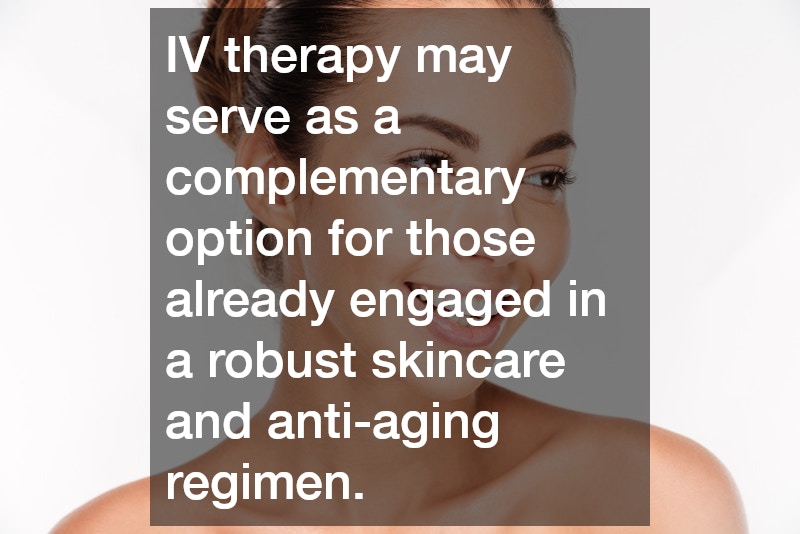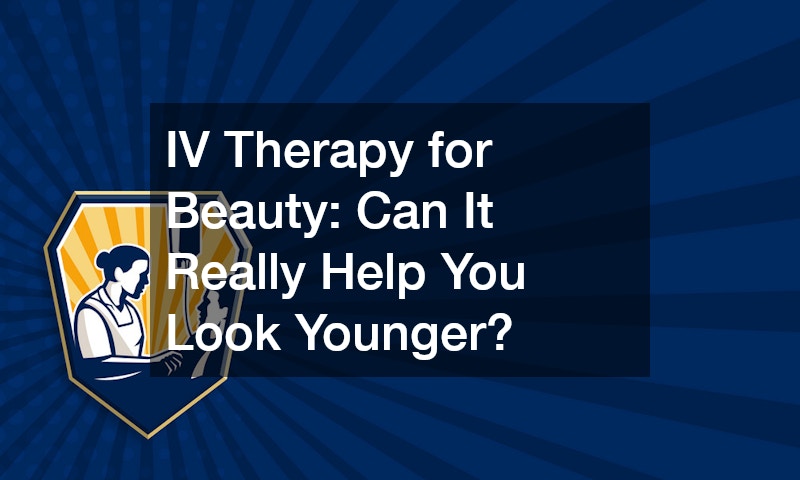Intravenous (IV) therapy has gained tremendous popularity in recent years, particularly as a beauty treatment promising a more youthful appearance. Originally used for medical purposes to ensure quick hydration and nutrient absorption, IV therapy is now being marketed to those seeking beauty benefits. This treatment involves the direct delivery of vitamins, minerals, and other essential nutrients into the bloodstream, theoretically providing more immediate results compared to oral supplements.
The beauty industry has embraced IV therapy enthusiastically due to its promise of radiant skin and youthful allure. Celebrities and influencers have popularized this trend by sharing their positive experiences with IV therapy on social media platforms, often depicting it as a quick fix for tired, aging skin. Such endorsements have spurred curious consumers to explore the potential anti-aging benefits, contributing to the rising demand for IV beauty treatments.
Despite its widespread popularity, the effectiveness of IV therapy for beauty purposes is still a topic of debate among medical professionals. While some experts claim that the direct infusion of nutrients can lead to improved skin health and collagen production, others argue that the evidence is largely anecdotal. To make an informed decision, it is critical to dissect the claims surrounding this treatment and consider both scientific support and personal experiences.
How Does IV Therapy Works for Anti-Aging?
IV therapy involves the administration of fluids, including tailored blends of vitamins and antioxidants, directly into the bloodstream. This method bypasses the digestive system, ensuring that a higher concentration of nutrients is delivered efficiently to the body’s cells. When it comes to beauty treatments, these nutrient-rich infusions are often tailored to enhance skin health, improve elasticity, and reduce fine lines.
Proponents of IV therapy argue that its rapid delivery system can stimulate collagen production and combat oxidative stress, factors that contribute to aging. For instance, high doses of vitamin C are often used for their antioxidant properties, potentially helping to neutralize free radicals that cause skin damage. This is supposed to lead to healthier skin, improved complexion, and a more youthful appearance over time.
However, the effectiveness of these treatments depends significantly on the individual’s unique health circumstances and genetic makeup. While some individuals may experience noticeable benefits, others may see minimal changes or none at all. Thus, it is important for prospective users to consult with medical professionals and consider personalized treatment plans based on their health status and beauty goals.
What Is the Science Behind IV Therapy?
Scientific research on IV therapy for skin rejuvenation is still in its infancy, with limited studies specifically addressing its effectiveness for anti-aging. Some studies suggest that certain nutrients delivered via IV can impact skin health positively, but these results are often preliminary. For example, vitamin C is known to support skin structure by enhancing collagen synthesis, but the extent to which IV therapy enhances this process remains under investigation.
In addition to vitamin C, nutrients like glutathione are also commonly used in IV beauty treatments. Glutathione is a potent antioxidant believed to help brighten skin tone and reduce blemishes, although scientific validation of its efficacy through IV administration is needed. The lack of large-scale trials and standardization in IV therapy procedures makes it challenging to draw definitive conclusions about the treatment’s benefits for skin rejuvenation.
It’s crucial to consider the potential placebo effect involved in such treatments. Some users may report feeling more radiant and youthful simply due to the placebo effect or the detoxifying effects of enhanced hydration, rather than direct physiological benefits. As research continues, balancing enthusiasm with cautious optimism remains essential when evaluating IV therapy’s role in beauty and anti-aging.
What Are the Potential Risks of IV Therapy?
Despite its allure, IV therapy is not without its risks and considerations. The procedure involves inserting a needle into the vein, which carries a small risk of infection, bruising, or vein inflammation. Moreover, the administration of high doses of certain nutrients can lead to potential side effects, including vitamin toxicity if not monitored properly.
There is also the ever-present risk of individuals with certain health conditions experiencing adverse effects. Those with heart, kidney, or liver issues should exercise caution or avoid such treatments altogether without medical advice. A thorough health assessment is crucial before embarking on any IV therapy regimen to prevent potential complications.
Moreover, considering the cosmetic nature of these treatments, cost becomes a factor. Beauty-focused IV therapy sessions can be expensive, with little insurance coverage, making them less accessible to the general public. Balancing the perceived benefits with costs is essential for those considering IV therapy primarily for cosmetic enhancements.
Ultimately, IV therapy may serve as a complementary option for those already engaged in a robust skincare and anti-aging regimen. Its effects are likely enhanced when combined with a healthy lifestyle and traditional beauty practices. As the landscape of beauty treatments evolves, staying informed and discerning is key to making choices that best align with individual beauty goals and health considerations.

